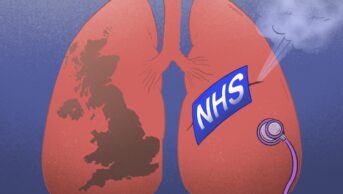The UK’s pharmacy workforce stands at a crossroads defined by unprecedented opportunity and profound crisis. As indispensable members of the healthcare system, pharmacists and pharmacy technicians are evolving, taking on increasingly complex clinical roles across hospitals, community pharmacies and GP practices. From medicines optimisation and clinical advice to the expanding frontier of independent prescribing, their potential to enhance patient care, improve efficiency and address health inequalities is immense. Yet, this potential is being critically undermined by a perfect storm of workforce shortages, crushing workload pressures and a pervasive wellbeing crisis that demands immediate and focused government attention.
The strain is palpable across all sectors. In hospitals, pharmacists are grappling with intense stress, primarily driven by inadequate staffing levels and relentless patient demand. We have covered this time and again in The Pharmaceutical Journal; most recently revealing in March 2025 that just 15% of trusts have the recommended number of pharmacists in their emergency departments.
Community pharmacy, the bedrock of accessible healthcare for millions, is facing an existential threat
There is also a lack of pharmacists working in respiratory services. Data collected by the National Respiratory Audit Programme revealed that just 39% of services had a respiratory pharmacist in post. And this month, our investigation into the number of sick days taken by pharmacy staff in NHS trusts shows an increased by 52% since 2019, which experts say is linked to growing mental health concerns of staff within the sector.
Community pharmacy, the bedrock of accessible healthcare for millions, is facing an existential threat. NHS data show a net loss of 432 pharmacies in England in 2023/2024 alone, with more than one-fifth of remaining pharmacies reducing hours owing to crippling financial and staffing pressures. An economic analysis of the sector, commissioned by NHS England and published in March 2025, revealed that 99% of pharmacies have had to change how they manage staff over the past three years as a result of financial concerns, including reducing staffing hours, reducing overtime and not providing pay rises comparable to other sectors. Even with an agreed 30% increase in funding by 2025/2026, the Pharmacists’ Defence Association has said the new contract’s lack of assurances around better pay, working conditions or career progression for pharmacists are “a glaring omission from this settlement”.
Meanwhile, the expansion of pharmacist roles in general practice, driven by initiatives such as the additional roles reimbursement scheme, has been a notable success story, integrating pharmacy expertise directly into primary care teams. Pharmacists are finding greater job satisfaction and opportunities in these roles; however, this rapid growth, while positive for primary care, appears to be slowing and has inadvertently destabilised the community sector by drawing pharmacists away, exacerbating workforce shortages.
This widespread crisis — characterised by burnout, recruitment struggles and the direct negative impact on patient care — cannot be ignored. It threatens to derail the significant transformation the profession is undergoing. The national ambition for all newly qualified pharmacists to be independent prescribers by 2026, the evolving role of pharmacy technicians and the potential efficiencies offered by technology, such as hub-and-spoke dispensing, all point towards a future where pharmacy professionals play an even more central, clinical role in patient care pathways.
However, this future cannot be realised without a stable, supported and sufficient workforce. This requires a strategic, long-term vision and significant, dedicated investment from the government.
A comprehensive, fully funded and integrated national workforce plan for the entire pharmacy sector is still urgently needed
Professional bodies, including the Royal Pharmaceutical Society, are united in their call for action. First, a comprehensive, fully funded and integrated national workforce plan for the entire pharmacy sector is still urgently needed. This plan must look beyond immediate pressures and anticipate future needs, acknowledging the interconnectedness of staffing across hospital, community and general practice settings. Simply shifting pharmacists from one sector to another solves nothing.
Second, investment in education, training and supervision must be substantially increased. This includes ensuring sufficient numbers of designated prescribing practitioners, adequate funding for trainees (potentially through mechanisms like the Learning Support Fund) and, crucially, guaranteed protected learning time for all pharmacy professionals to support continuous development and prevent burnout. The expansion of independent prescribing for new and existing pharmacists hinges on this investment.
Finally, and fundamentally, the wellbeing of the pharmacy workforce must become a central priority. This means tackling the root causes of burnout — workload, understaffing, lack of work-life balance — improving access to tailored mental health support, addressing the chronic issue of medicine shortages, which adds significant stress, and fostering workplace cultures that actively combat abuse.
The pharmacy workforce is not asking for the impossible; it is asking for the necessary investment and strategic focus to allow it to meet the evolving healthcare needs of the nation. Failure to act decisively now risks not only the future of the profession but the accessibility and quality of patient care across the UK.
Announcing The Pharmaceutical Journal‘s Frontline Pharmacy Workforce Campaign
Recognising this critical juncture, The Pharmaceutical Journal is launching a dedicated campaign focused on securing a sustainable future for the pharmacy workforce. Over the coming months, we will delve deeper into the challenges, champion innovative solutions and advocate for the policy changes and investment needed to fill workforce gaps, improve wellbeing and create a more robust, resilient and rewarding profession for the future. We invite all pharmacy professionals in every capacity — front line staff, employers, educators, policymakers and patients — to join us in this vital effort. The time for meaningful action is now. PJ
You may also be interested in

It is an exciting time to be a respiratory pharmacist — and we need more of them

Campaign to give NHS pharmacists mandated protected learning time launched by the Guild of Healthcare Pharmacists

